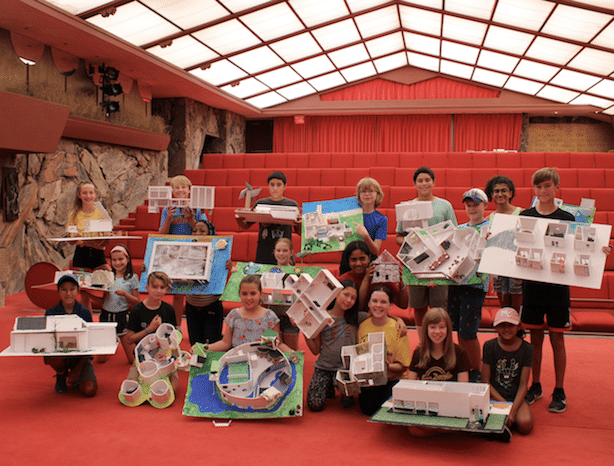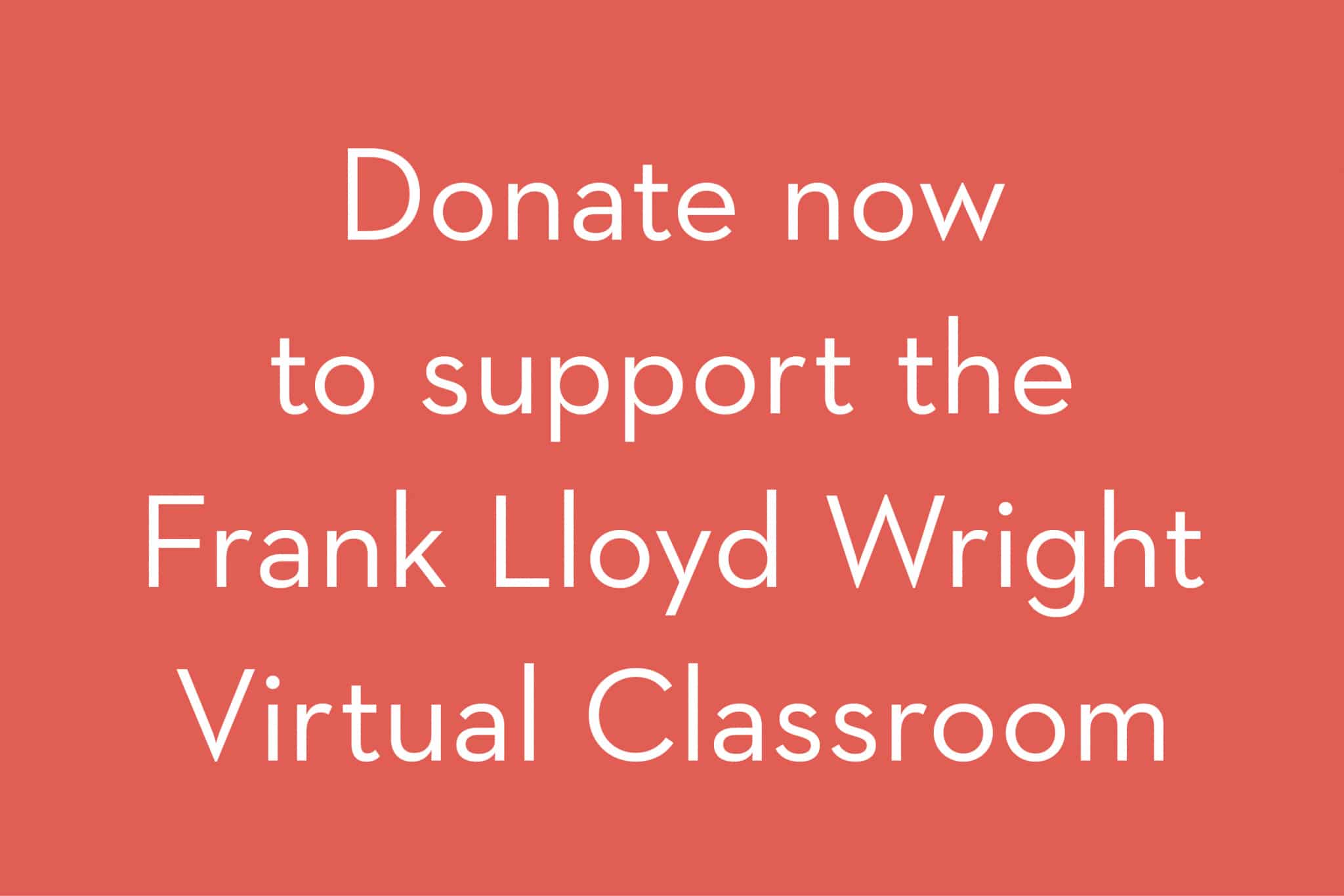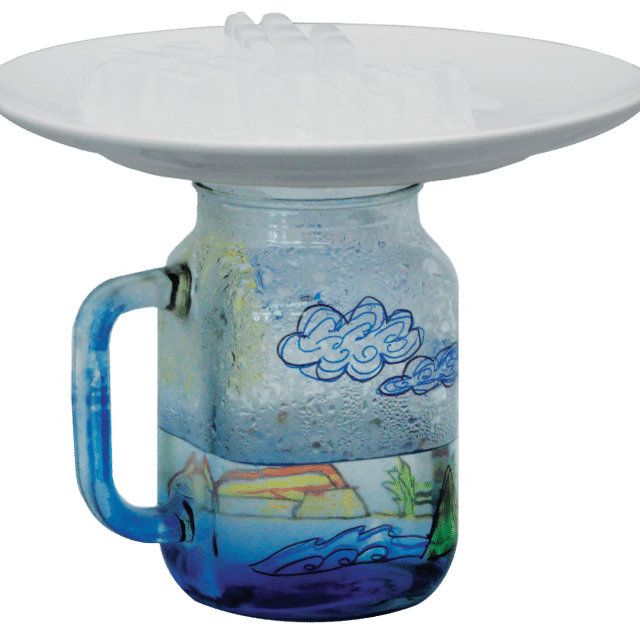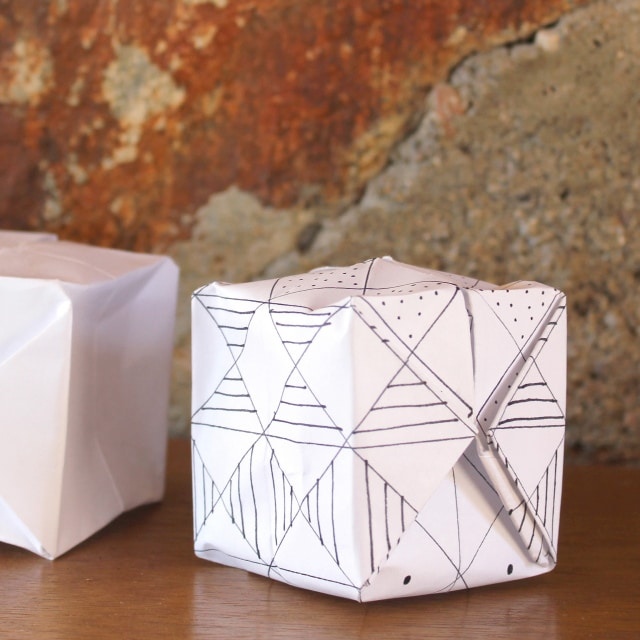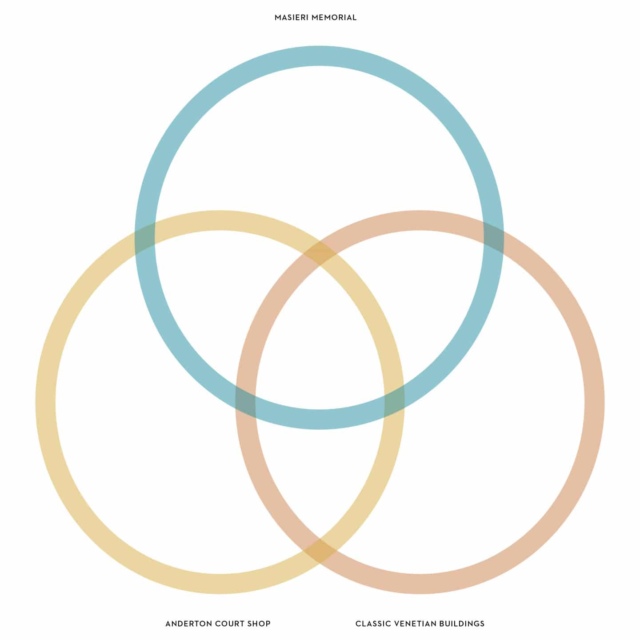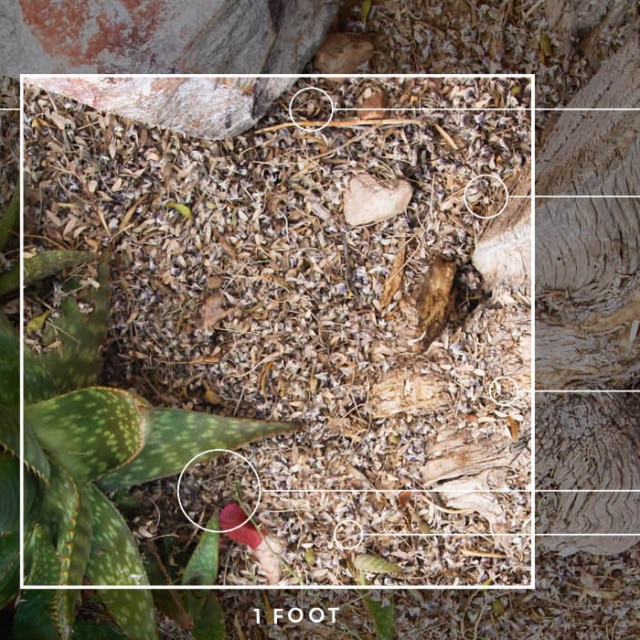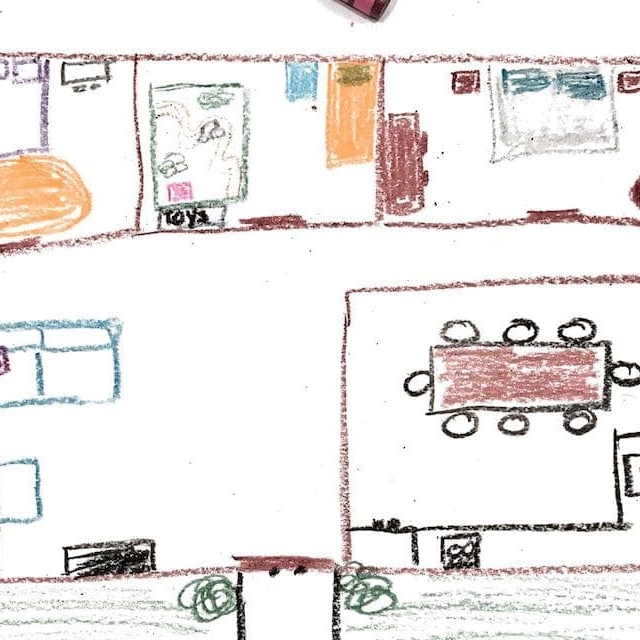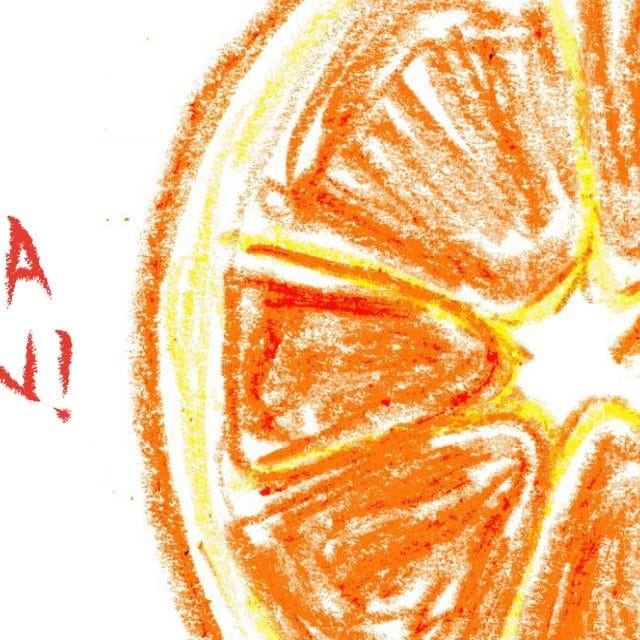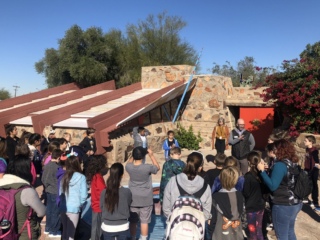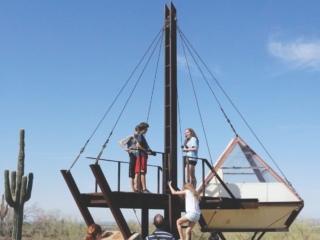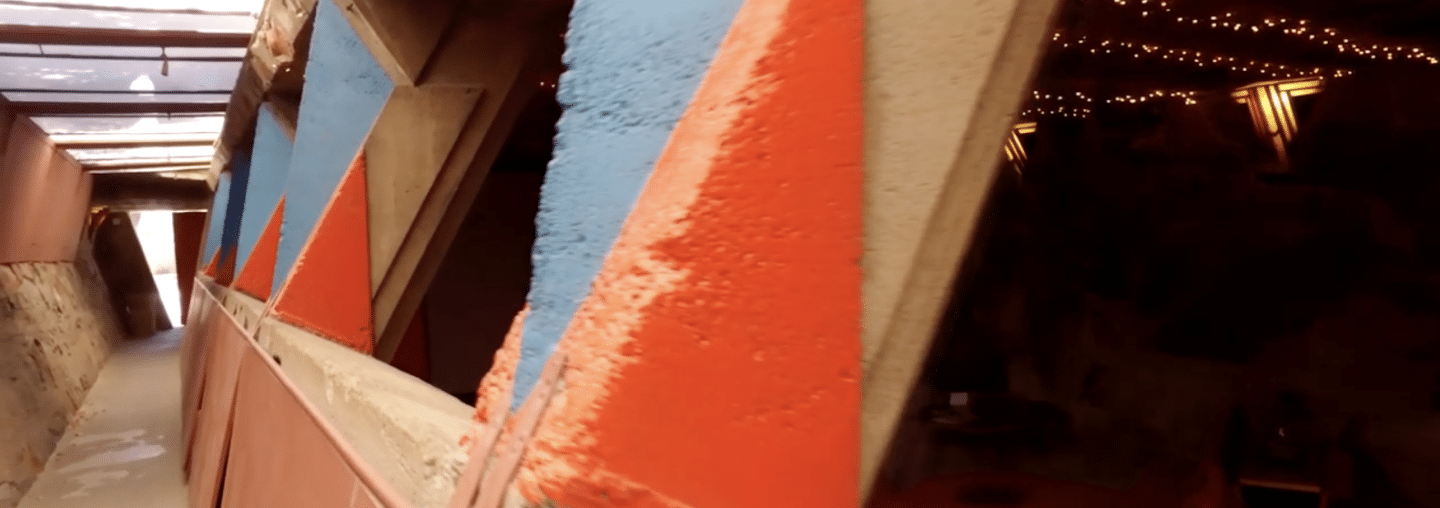
Frank Lloyd Wright Virtual Classroom Activity 3: Triangles, Load Bearing Shapes, & Stylistic Drawings
Frank Lloyd Wright Foundation | Apr 29, 2020
The Frank Lloyd Wright Foundation has collaborated with the Paradise Valley School District to create this K-12 curriculum. This is the third of 6 activities from that collaboration. For Activity 3 in the Frank Lloyd Wright Virtual Classroom, we’ll focus on triangles, load bearing shapes, and stylistic drawing. Kids will also discover whether a circle, triangle, or square is the strongest.
Welcome back to our third activity based around a stylistic drawing! Let’s recap what we have learned so far on our journey to make our own sidewalk stained–glass drawing!
-
In the last video, we learned about the geometry of a square, how to identify them in buildings, and how they support a building.
-
We also learned about patterns and how to identify them in a building.
-
You then drew your own realistic drawing of your favorite plant image and compared it with your family’s drawings to see if they had patterns in their drawings!
-
We have been talking a lot about shapes, and how shapes make up patterns that can be found in nature and in plants. However, did you know those shapes and sometimes patterns help hold a plant up, so that it does not fall over? Watch below to learn more!
FIRST STEPS:
Watch the video. Next, try the load bearing shapes exercise below.
After you finish the exercise, scroll down to work on activity 3 to learn about stylistic sketching!
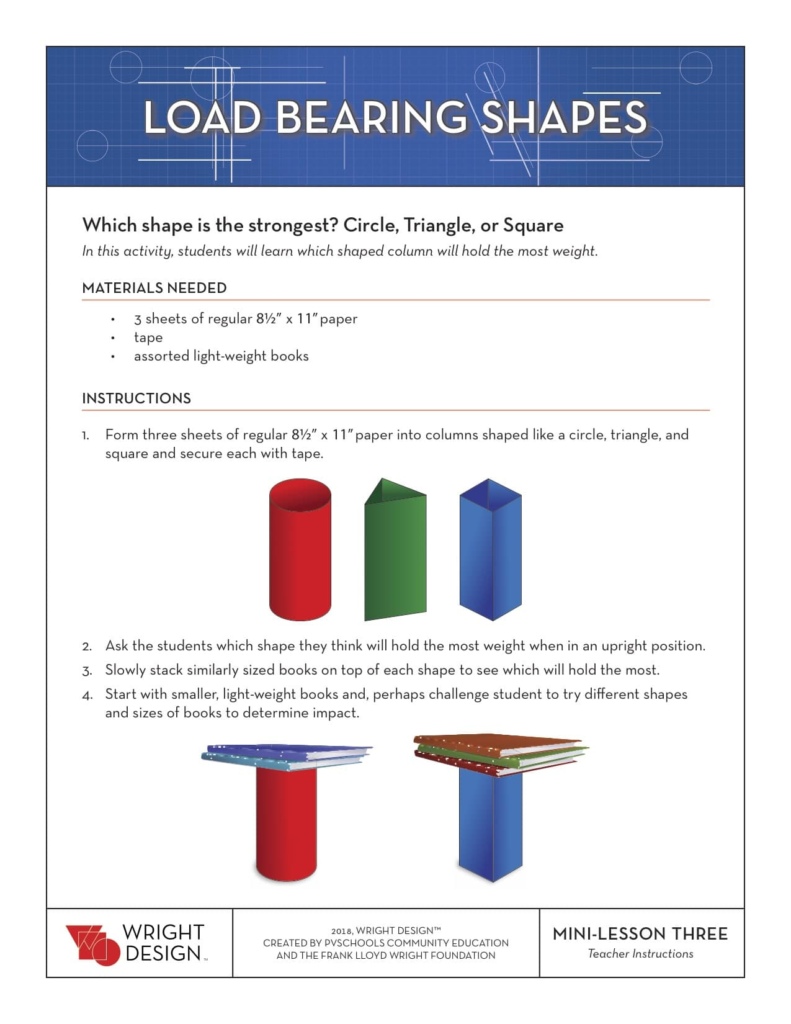
Stylistic Sketching
MATERIALS FOR ACTIVITY 3:
-
Nature inspiration image
-
Your realistic drawing from Activity 2
-
Blank paper
-
Pencil, eraser, ruler
Now that we know about some shapes and patterns, have a family discussion around what we think a stylistic drawing is.
How is it different than a realistic drawing?
For clues, look at our stylistic drawings we just did of Ginkgo Leaf, Wheat stalk, and Hollyhock blooms!
What do you see? We should start to see shapes form!
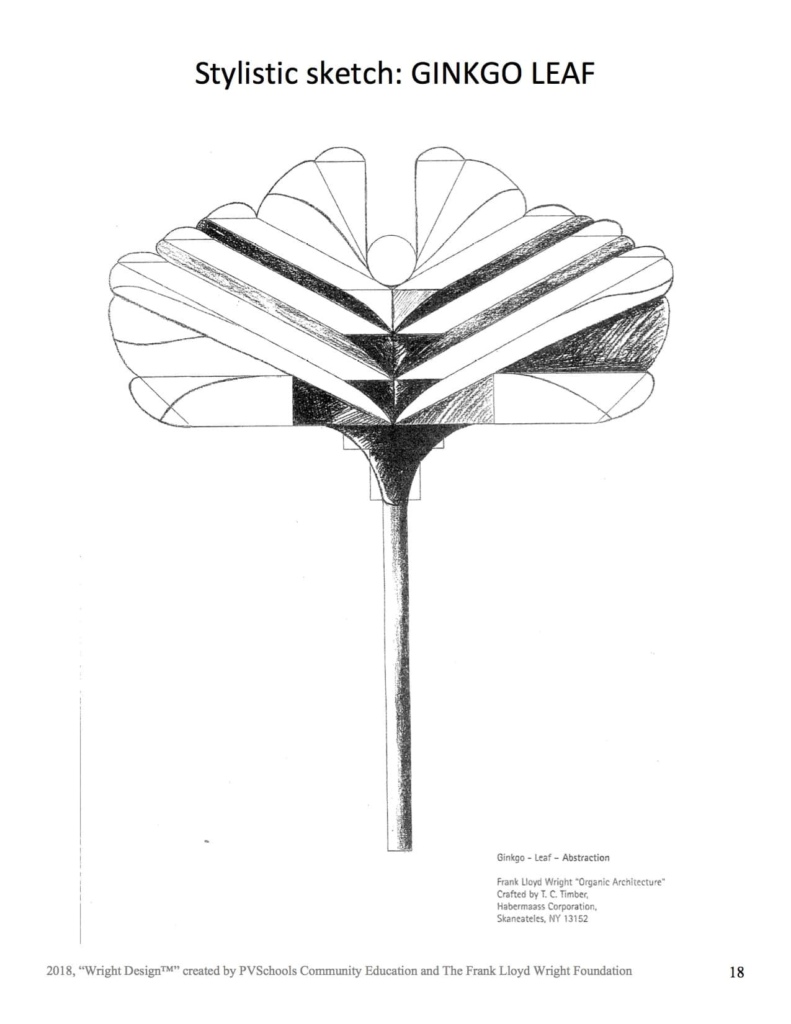
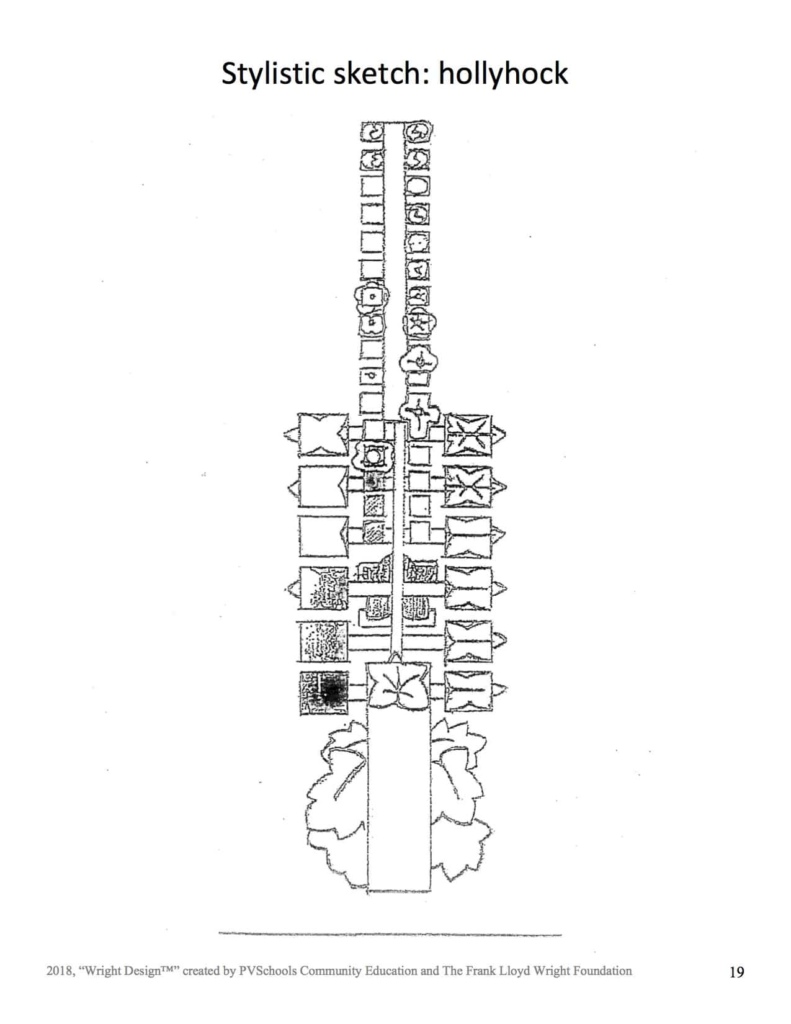
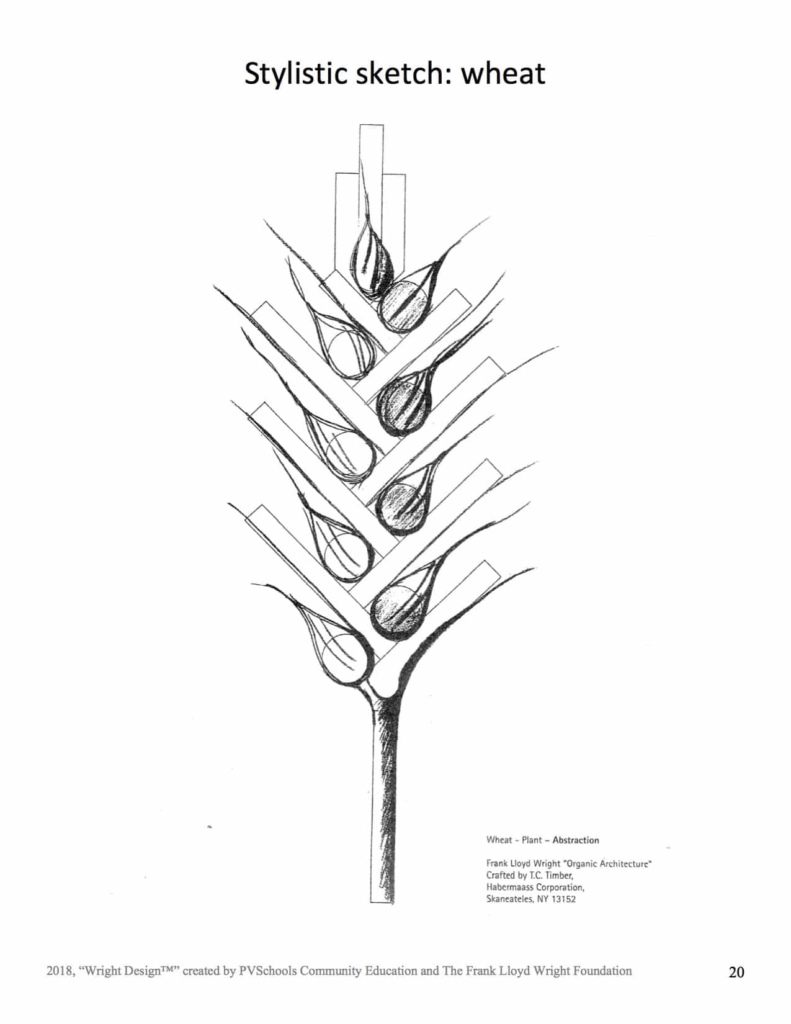
1. Now it’s your turn to draw a stylistic sketch from your realistic sketch that you made in Activity 2. The goal here is to make those shapes and patterns start to appear from your realistic drawing.
2. Once you have completed your stylistic drawing, compare it with your family’s stylistic drawings! Send us a copy of your new drawing on our Facebook page!
Next week we will learn how to turn these drawings into a full geometric drawing. Stay tuned for Activity 4!

Virtual Classroom Activities 1-6
Each week, we’ll debut a new Virtual Classroom activity for a total of 6 to work on. These activities can be completed at your own pace and will stay in the Virtual Classroom for you to enjoy. Each new activity builds on the next to help you along a journey to create the final project: your very own work of art inspired by Frank Lloyd Wright’s famed art glass!
Don’t forget to share your work along the way! Show us your Activity drawings on the Frank Lloyd Wright Foundation Facebook page.
Return to Virtual Classroom Activities 1-6
The Frank Lloyd Wright Foundation has collaborated with the Paradise Valley School District to create this K-12 curriculum that has been test-piloted across hundreds of students within the district. These 6 activities represent an abbreviated version of that original curriculum, drawn from those learnings and programming.
More Hands-on Activities To Try at Home
At the Frank Lloyd Wright Foundation, we use Frank Lloyd Wright’s revolutionary design concepts and buildings at Taliesin West to educate and inspire people of all ages, challenging them to understand and embrace innovation in their own lives.
Through the hands-on activities below, we encourage you to explore and discover science, technology, engineering, art, and math concepts through fun, interactive activities inspired by Wright. These activities present an opportunity to share ideas and personal opinions, surprise each other, and discover the world through a new lens.
The Frank Lloyd Wright Foundation is dedicated to providing quality STEAM education experiences to challenge young people around the world to be critical thinkers and creative problem solvers. During this uncertain time, with families around the world keeping their kids engaged in learning activities, the Foundation is proud to offer these lessons and other activities free of charge. Your support helps the Frank Lloyd Wright Foundation keep their staff employed and creating education programs at this critical time, and long into the future.
Support these education programs and the work of the Frank Lloyd Wright Foundation.
